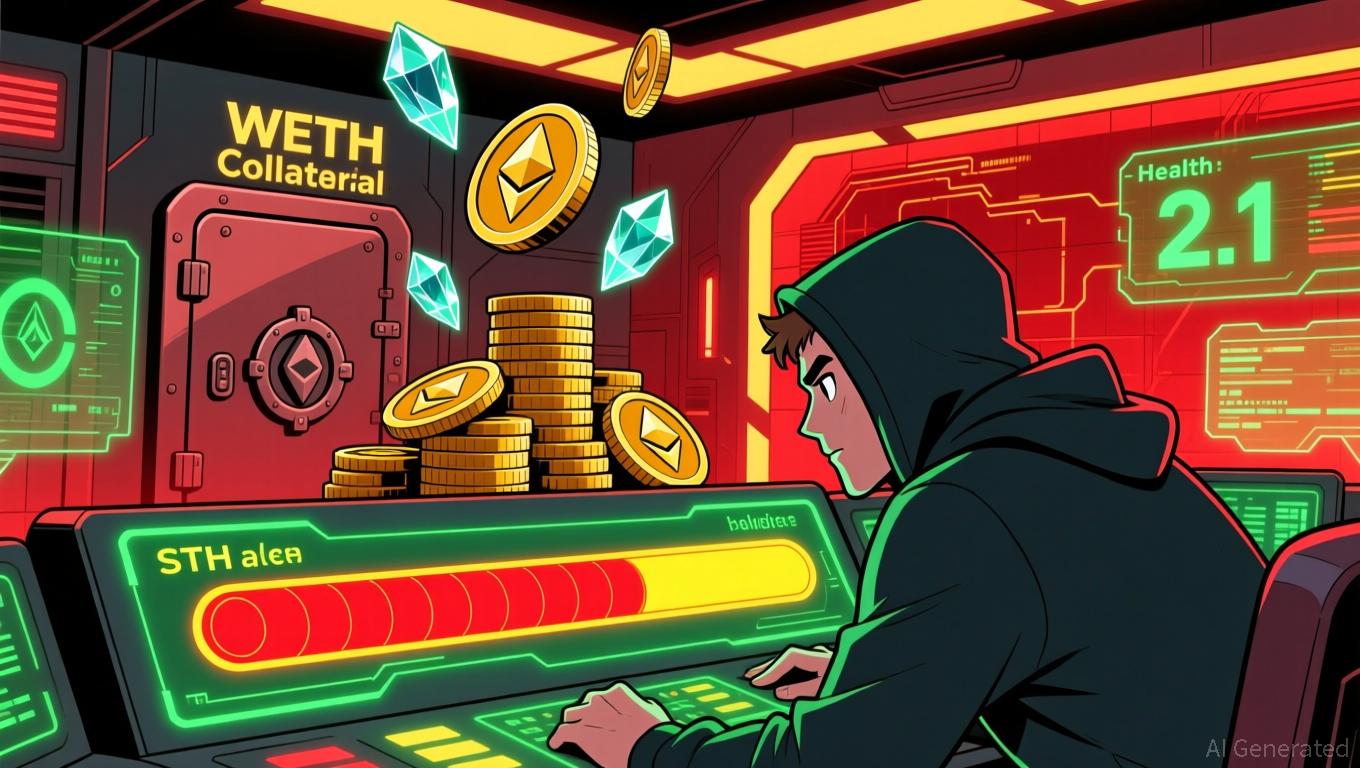Regulation and Innovation: Brazil's Stablecoin Reform Ignites Discussion
- Brazil's central bank classifies stablecoins as forex operations under 2026 rules requiring AML/CTF compliance and capital reserves. - Privacy advocates criticize the framework for enabling "total surveillance" through centralized user data tracking and increased cyber risks. - Regulators defend the measures as essential to combat money laundering in Brazil's $1.7 trillion crypto market while advancing its CBDC project Drex. - Global parallels emerge with UK's £20,000 stablecoin cap, highlighting growing
Brazilian Central Bank Recognizes Stablecoins as Foreign Currency Transactions
The Central Bank of Brazil has officially designated stablecoin activities as foreign currency transactions, implementing a comprehensive set of regulations that will be enforced starting February 2026. Announced through Resolutions 519, 520, and 521, this initiative seeks to subject stablecoins to the same anti-money laundering (AML) and counter-terrorism financing (CTF) standards as conventional banks, making Brazil one of the first major economies to regulate digital assets as foreign exchange instruments.
According to the new framework, all stablecoin transactions linked to fiat currencies—including overseas payments, card purchases, and international transfers—must now adhere to Brazil’s established foreign exchange laws.

The new rules have sparked immediate backlash from privacy supporters, who claim the regulations amount to “complete surveillance” of crypto participants. Analyst Felipe Demartini pointed out that exchanges will need to keep a centralized record of user identities, transaction logs, and wallet information, potentially exposing users to cyber threats and political exploitation
The central bank has justified its stance as essential for aligning the crypto market with broader financial stability objectives. Gilneu Vivan, Director of Regulation, stated that the new policies will “limit opportunities for scams, fraud, and the misuse of virtual asset platforms for money laundering,” referencing the R$1.7 trillion in crypto transactions processed in Brazil in 2024
On the global stage, Brazil’s regulatory approach mirrors a broader movement toward harmonized oversight. Comparable policies are being rolled out in the U.S. and U.K., where stablecoin regulations are designed to balance technological progress with consumer safety. For example, the Bank of England has introduced a £20,000 cap on individual stablecoin holdings, citing concerns over financial stability
With the February 2026 deadline drawing near, Brazilian crypto companies are entering a crucial phase of regulatory adjustment. While the new rules provide much-needed clarity for a rapidly expanding sector, they also highlight the ongoing tension between regulatory oversight and the decentralized nature of blockchain. For now, Brazil’s central bank remains committed to its dual objectives: promoting innovation while protecting the stability of the national financial system
Disclaimer: The content of this article solely reflects the author's opinion and does not represent the platform in any capacity. This article is not intended to serve as a reference for making investment decisions.
You may also like
Why DASH Is Experiencing Significant Growth in November 2025
- DoorDash (DASH) surges in Nov 2025 due to 90.64% institutional ownership and $7.79M Q2 investments by AGF Management. - Partnerships with Serve Robotics and $450M+ 2026 autonomous delivery investments aim to reduce costs and redefine logistics. - Institutional-technology synergy creates self-reinforcing growth, with R&D innovations attracting further capital inflows. - DASH's market outperformance reflects strategic positioning at retail-autonomous tech intersection, signaling delivery industry transform

Zcash (ZEC) Experiences Price Rally in Late 2025: Privacy-Focused Cryptocurrencies Return as Macro Safe-Haven Choices
- Zcash (ZEC) surged 750% in late 2025, outperforming Bitcoin and Ethereum amid growing demand for privacy-focused crypto assets. - Network upgrades by Electric Coin Company enhanced privacy via ephemeral addresses and zk-SNARKs, while Japan's crypto-friendly regulations boosted institutional adoption. - Institutional interest in Zcash's shielded transactions and low correlation with traditional crypto assets positions it as a strategic hedge against surveillance and volatility. - Regulatory clarity in Jap

Ethereum News Update: Major Ethereum Holders Invest $1.37B During Market Dip, Indicating Potential Rise to $10K
- Ethereum whales spent $1.37B buying 394,682 ETH during November 2025's 12% price drop, signaling strong bullish conviction. - Aave whale leveraged $270M loans to acquire 257,543 ETH ($896M), using a high-leverage borrowing-swapping cycle to expand holdings. - Institutional buyers like Bitmine Immersion added $139.6M ETH, joining coordinated accumulation as exchange reserves hit 2016 lows. - Market fundamentals show negative MVRV readings and $3,400 ETH stabilization, with analysts projecting $4,800–$10,0

UAE Executes Its Inaugural Digital Dirham Transaction: A Key Step Toward Shaping the Worldwide Digital Economy
- UAE executed first government transaction using Digital Dirham CBDC via mBridge platform in under two minutes. - The pilot involved Dubai Finance and Ministry of Finance, demonstrating blockchain-driven efficiency in public sector payments. - mBridge collaboration includes BIS, CBUAE, and regional partners, with Saudi Arabia joining in 2024 to expand cross-border capabilities. - UAE leaders called the initiative a "strategic pillar" for digital economy growth, aligning with global financial modernization
